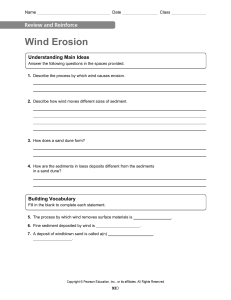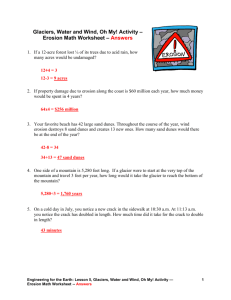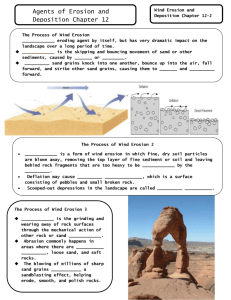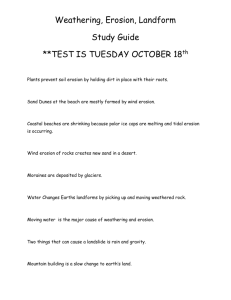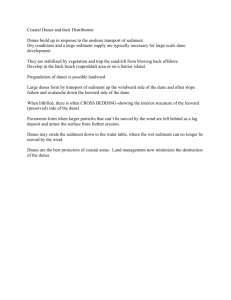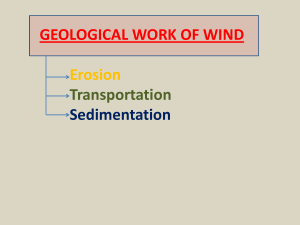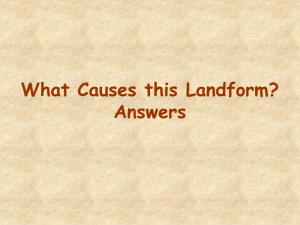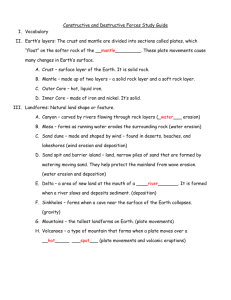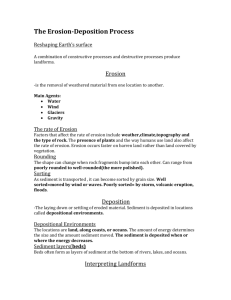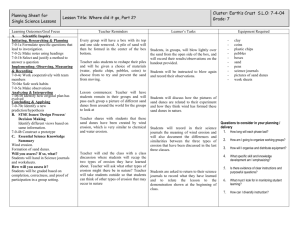3. Wind
advertisement
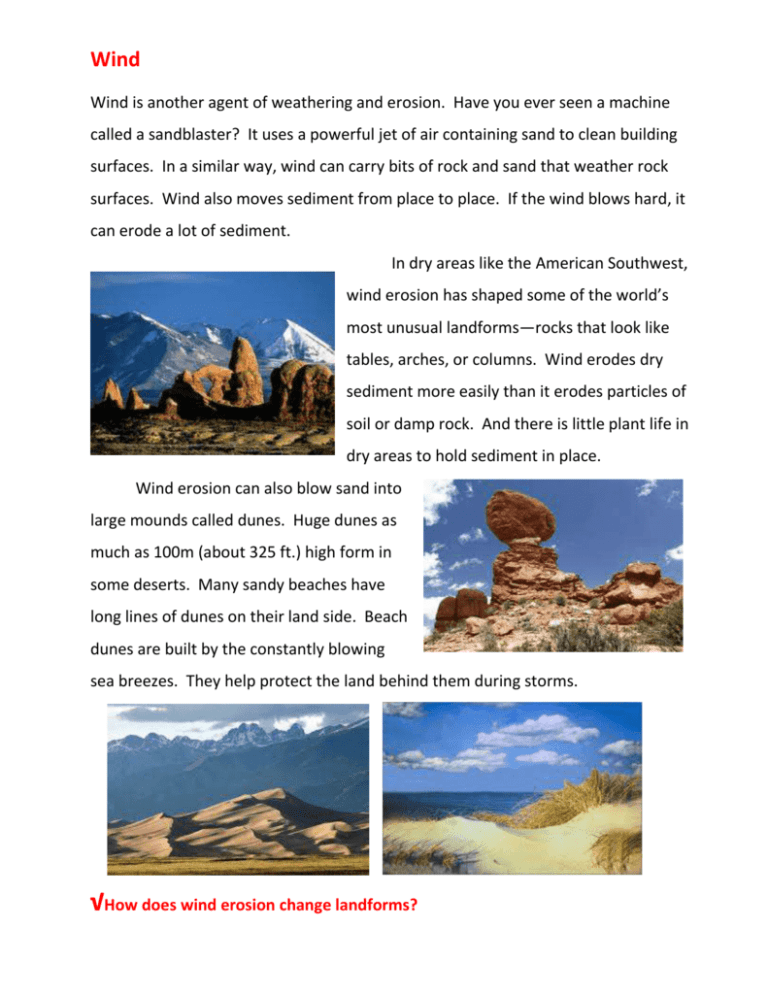
Wind Wind is another agent of weathering and erosion. Have you ever seen a machine called a sandblaster? It uses a powerful jet of air containing sand to clean building surfaces. In a similar way, wind can carry bits of rock and sand that weather rock surfaces. Wind also moves sediment from place to place. If the wind blows hard, it can erode a lot of sediment. In dry areas like the American Southwest, wind erosion has shaped some of the world’s most unusual landforms—rocks that look like tables, arches, or columns. Wind erodes dry sediment more easily than it erodes particles of soil or damp rock. And there is little plant life in dry areas to hold sediment in place. Wind erosion can also blow sand into large mounds called dunes. Huge dunes as much as 100m (about 325 ft.) high form in some deserts. Many sandy beaches have long lines of dunes on their land side. Beach dunes are built by the constantly blowing sea breezes. They help protect the land behind them during storms. √How does wind erosion change landforms?
